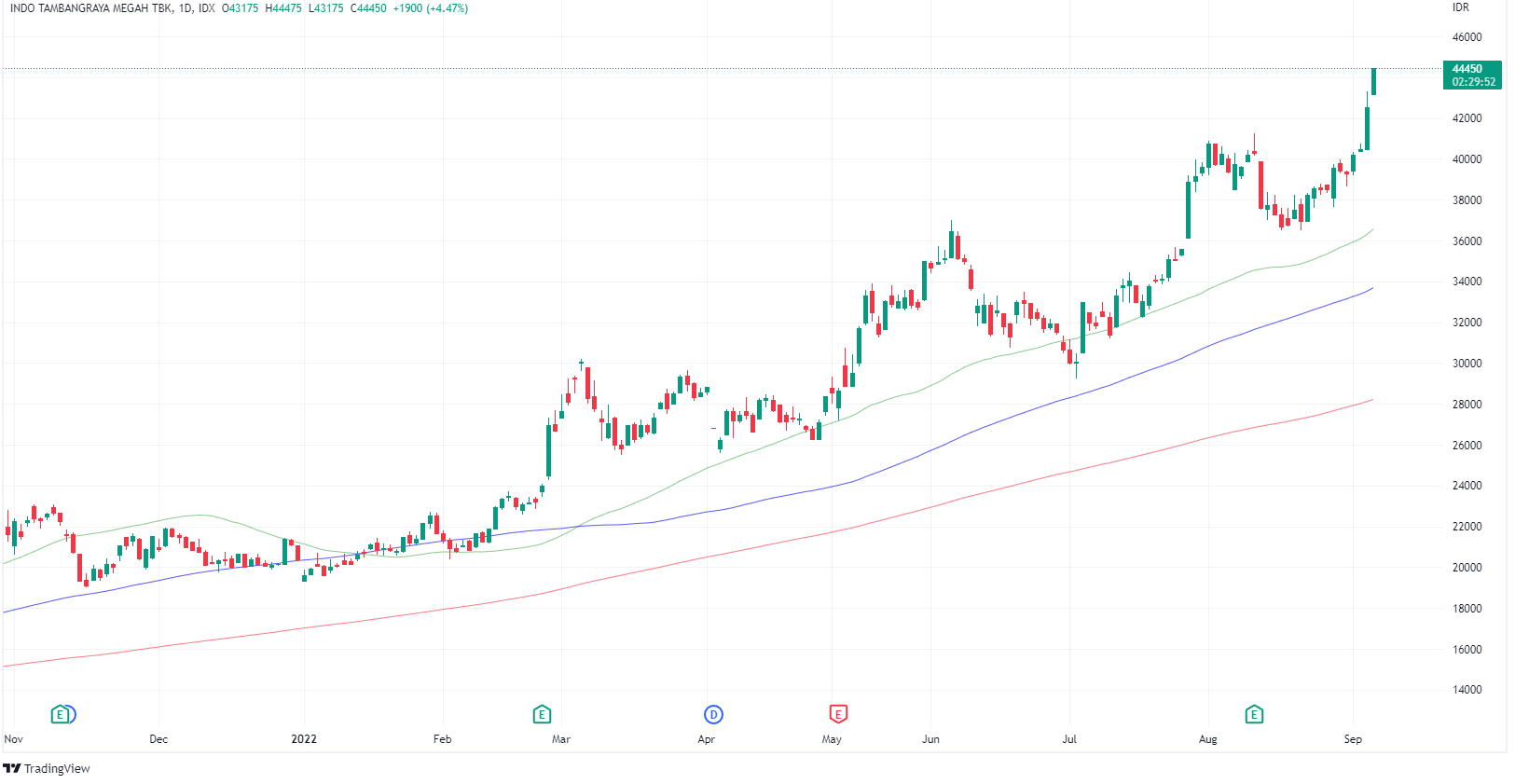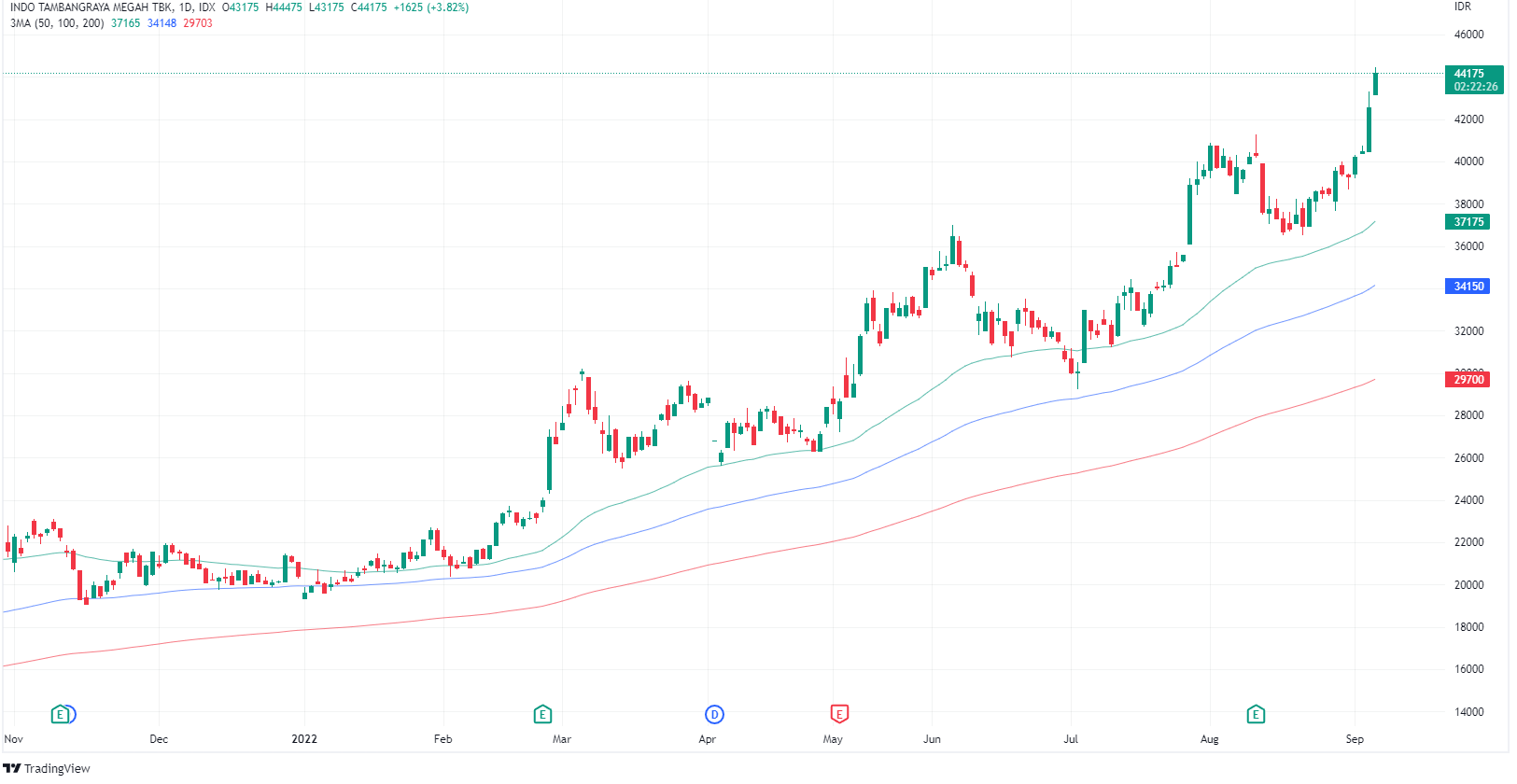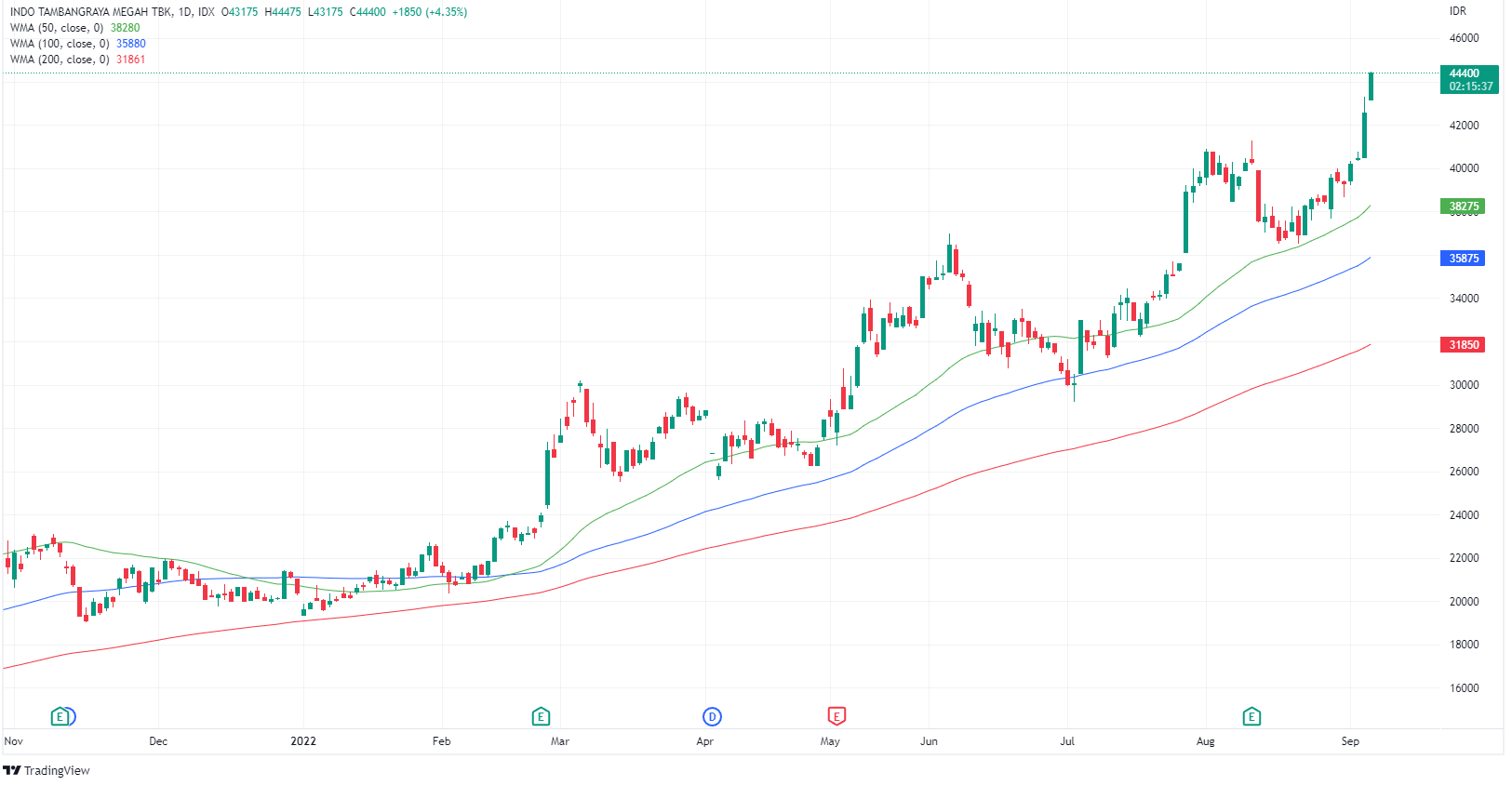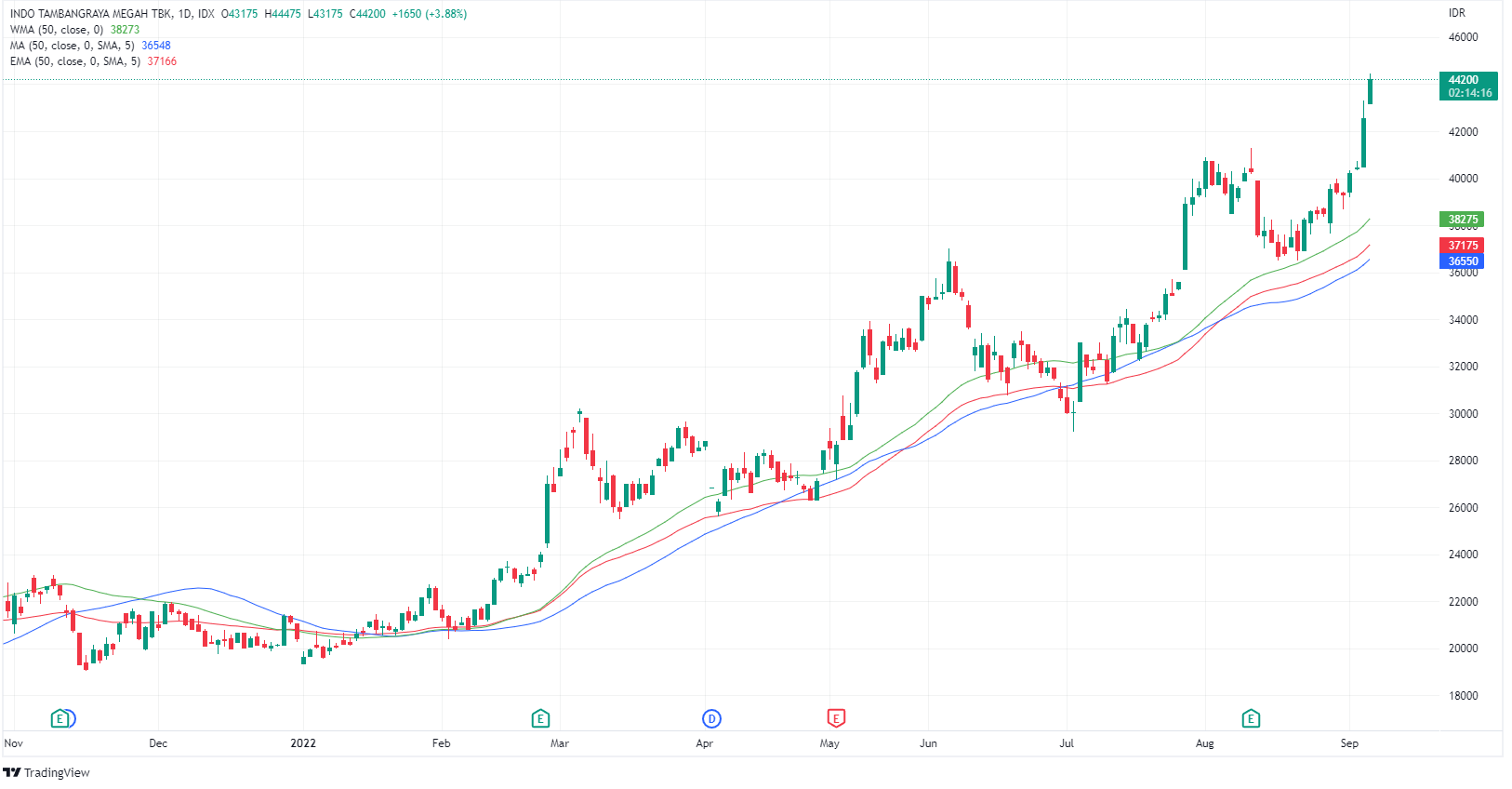What's the difference between Simple Moving Average (SMA), Exponential Moving Average (EMA), and Weighted Moving Average (WMA)?

Golden cross and death cross . Have you ever heard that word when someone is analyzing a stock? Usually these words appear when we use technical indicators such as moving averages . The next question, what is a moving average ? Moving average is a technical indicator that shows the average movement of a stock over a certain period.
Why do many analyzes use moving averages as indicators? Because this indicator has several functions such as: reading a price trend, acting as resistance or support, and as a price target for an increase or decrease in price.
Now there are various types of moving averages , such as Simple Moving Average (SMA), Exponential Moving Average (EMA), and Weighted Moving Average (WMA). What's the difference?
1. Simple Moving Average (SMA)
The first is the Simple Moving Average . This is the simplest and most used version of the moving average . Simply put, the Simple Moving Average is obtained from the total of all prices in a certain period divided by the number of periods. Example: MA100, meaning the total closing price in 100 days divided by 100 (the period).
For more details, you can look at the image below.

An example is the ITMG stock, with moving average indicators each with a period of 200 (red), 100 (blue), 50 (green). It can be seen that the stock is in an uptrend phase which is marked by a series of MAs that consistently point upward following the share price.
2. Exponensial Moving Average (EMA)
The second is the Exponential Moving Average . Exponential Moving Average movements are more sensitive to stock prices because there is weighting on the most recent prices that exist. The way it's calculated is multiplying the last closing price by the exponential weight ratio X and adding it to (1 – X) the running average.
Confused how to calculate it? Relax, you don't need to bother taking a calculator and calculating the formula above because the chart provider has provided the EMA indicator. So you just have to put it on the respective chart .

You can see the chart above, this is an example of using the Exponential Moving Average (EMA) on the same stock, namely ITMG
3. Weighted Moving Average (WMA)
And the last one is the Weighted Moving Average . Almost the same as MA character number 2, WMA gives greater weighting to the latest price than the previous price so that this type of moving average is more sensitive to stock prices. You don't need to worry about how to calculate WMA, because charting service providers already provide this indicator.

Now, for example like the picture above, we use the WMA indicator with the same stock, namely ITMG.
Now, let's take a closer look at SMA, EMA and WMA, which one is more sensitive to stock price movements?

An example of the movement of the ITMG stock using the SMA (Blue), EMA (red) and WMA (Green) indicators for the same period, namely 50. The differences between these three MAs are:
- The most price sensitive moving averages are the EMA and WMA.
- WMA is more 'sensitive' to price movement than EMA.
- The moving average that takes the longest to respond to stock prices is the SMA and is also the farthest in value when compared to the EMA and WMA.
How, you already know the types of MA above, right? Which one are you more suitable for?
Posting Komentar untuk "What's the difference between Simple Moving Average (SMA), Exponential Moving Average (EMA), and Weighted Moving Average (WMA)?"